Imagine a bustling aviary, where birds move quickly and make sounds. They have a special rhythm of bathroom habits. How often do these birds go to the bathroom, and what affects their habits?
Bird owners and fans are often curious about how often birds poop. This depends on the bird’s size, how fast it eats, what it eats, and how much water it drinks. Small birds like finches and sparrows poop a lot, up to 40-50 times a day. Big birds like macaws poop less, about 15-20 times a day.
This difference comes from how fast birds eat and process food. Their fast metabolism means they poop often.
Key Takeaways
- Smaller birds like finches and sparrows tend to poop more frequently, up to 40-50 times a day.
- Larger birds like macaws may only go 15-20 times a day.
- Birds have a high metabolic rate and process food quickly, leading to their frequent elimination habits.
- The frequency of bird defecation depends on factors like size, metabolism, diet, and water intake.
- Understanding avian bathroom habits can help bird owners and enthusiasts better care for their feathered friends.
Introduction to Avian Bowel Movements
It’s important to understand how birds poop to take good care of them and keep their living areas clean. Birds have a special opening called the cloaca. This is where their poop and pee come out. Their poop is a mix of feces and uric acid, which is like bird urine.
Understanding Bird Defecation Habits
Parrots can poop a lot, showing they need their droppings checked often to stay healthy. Their poop can look like soft-serve ice cream. The color of their poop tells us about their diet. Seed-eaters have green poop, while those eating pellets have brown poop.
If a bird’s poop is too runny, it might mean they’re stressed, have high blood pressure, or ate too much water-rich fruit. Seeing red or black blood, bubbles, or undigested food in their poop can mean they’re sick. This could be from bleeding inside, an infection, or kidney problems.
It’s key to notice if a bird’s poop is the same size and comes out at the same time every day. If it’s not, they might have a blockage or not be eating well. Spotting odd poop early can help catch health problems fast. Changing their diet can also help avoid many poop-related health issues.
“Birds lack teeth and heavy jaw muscles, which have been replaced by a lightweight beak.”
Factors Influencing Bird Poop Frequency
Bird droppings vary in frequency due to several factors. These include the bird’s size, metabolism, diet, and water intake. Knowing these factors helps us understand how often birds go to the bathroom.
Size and Metabolism
Smaller birds like finches and sparrows process food faster than big birds. This means they go to the bathroom more often. They can poop up to 40-50 times a day. In contrast, big birds like macaws poop about 15-20 times a day because they process food slower.
Diet and Water Intake
What a bird eats and drinks affects how often it poops. Birds that drink more water have more frequent, possibly liquid, bowel movements. This is because they have more waste to get rid of. Birds eating dry foods poop less often but their droppings are solid.
Understanding how bird size and metabolism and bird diet and water intake affect pooping frequency helps us appreciate bird behavior more.
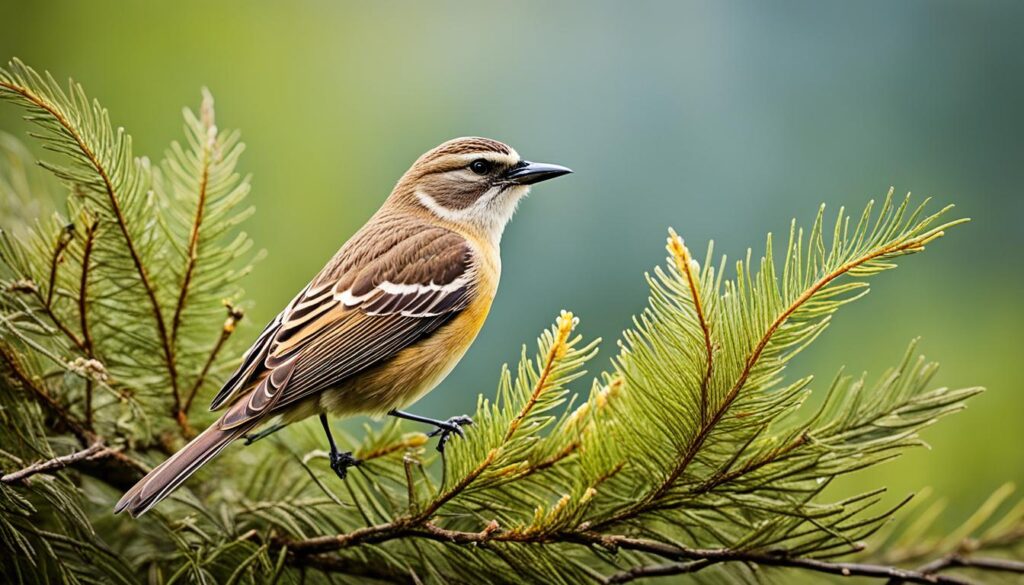
“The frequency of bird droppings is a fascinating aspect of avian biology, reflecting the intricate interplay between a bird’s physical characteristics and its dietary habits.”
Finches and Small Birds’ Potty Patterns
Finches, sparrows, and other small birds visit the bathroom a lot. They can poop up to 40-50 times a day. They make small droppings often because they have a fast metabolism. This helps them stay light for flying.
Finches and small birds have interesting bathroom habits. They can control their body functions well. This lets them fly easily. Their habits show how they adapt to life in the sky.
- Budgies can have dozens of bowel movements per day, while larger birds like macaws may have as few as 15 bowel movements per day.
- Birds with smaller bodies tend to excrete waste more frequently than larger birds.
- Some types of birds poop more frequently than others; for example, cockatoos tend to have less frequent bowel movements compared to budgies.
Learning about finches and small birds poop patterns helps us understand their needs. It shows how we can take better care of them. This ensures they stay happy and healthy.
How often do birds poop?
Birds poop at different rates, depending on their size and diet. Smaller birds like finches and sparrows poop up to 40-50 times a day. In contrast, larger birds, such as macaws, poop about 15-20 times a day.
This difference is due to their size, metabolism, and what they eat. Birds poop as often as every five or 10 minutes. It’s important to watch how often your bird poops to understand their schedule.
Using kind words and treats can help teach birds to poop in the right spot. This makes them learn that it’s a good thing to do.
Birds poop and pee at the same time, thanks to their fast digestion. They don’t fart because their digestive system works quickly. Their waste is a mix of uric acid, solid waste, and urine, all coming out through the cloaca.
The white color of bird poop comes from uric acid mixing with solid waste. Purple or dark bits might be from eating berries like blackberries. While bird poop is mostly harmless, it can carry diseases like bird flu and salmonellosis.
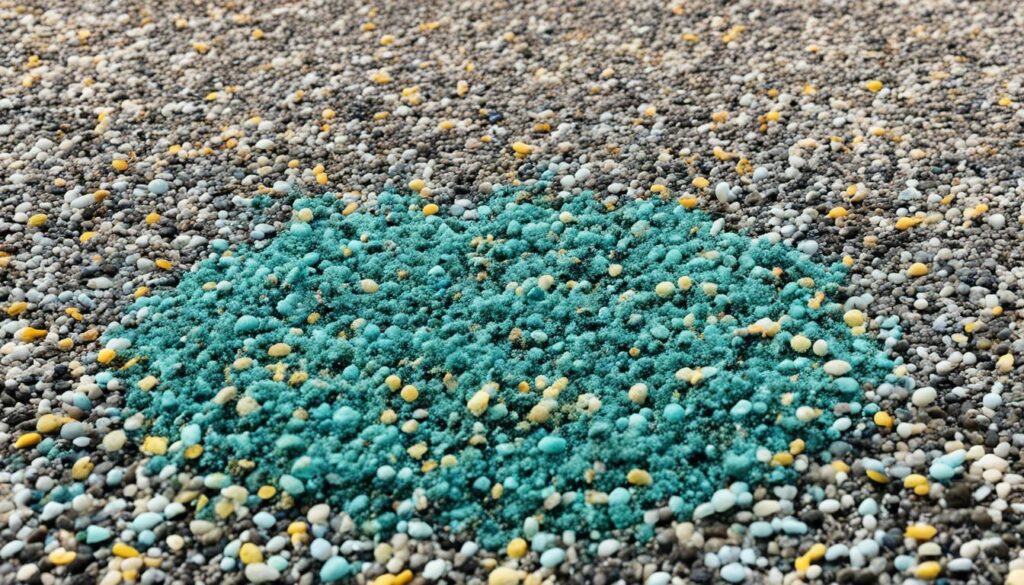
Smaller birds poop more often than larger ones. Training a bird to use waste paper can take months but is worth it for its convenience.
Parrot Pooping Peculiarities
Parrots have their own special ways of pooping, which changes with their size and type. Knowing about parrot pooping patterns helps in taking good care of them and keeping their homes clean.
Medium Parrots’ Poop Schedule
Medium-sized parrots, like Jardine’s parrots, poop a lot. They can go to the bathroom once every 10-20 minutes. This can be hard for their owners to keep up with. It’s important to manage the medium parrots poop schedule well to keep their space clean.
Larger Parrots’ Dropping Dilemma
Larger parrots poop less often than medium ones. Some may only go once every 30 minutes to an hour. But, they might sometimes have “projectile pooping” incidents. They try to hold it in to avoid pooping in their cages. Handling the larger parrots dropping dilemma needs patience and good care habits.
Whether you have a medium or a large parrot, knowing their pooping patterns is key. It helps keep their living area clean and healthy.
“Parrots have a fascinating array of pooping habits, and it’s important for owners to be aware of the differences between species and size classes. Staying on top of their bathroom routines is key to providing the best possible care.”
Baby Birds’ Bathroom Habits
Caring for baby birds is a delicate task. It’s important to know their unique pooping patterns. Hatchlings and nestlings poop more often than adults. Their parents clean up after them, keeping the nest clean.
As baby birds grow, they start pooping like adult birds of the same kind. This change is part of their growth. Pet owners or bird fans should know about these changes in baby birds bathroom habits and young birds poop patterns.
“The transition from baby bird to adult pooping habits is a fascinating aspect of avian development.”
Fecal sacs are a key part of baby bird bathroom habits. These sacs are found in birds like robins and bluebirds. They keep the nest clean and may also feed the parents.
- Nestlings produce fecal sacs that their parents eat, getting valuable nutrients.
- This behavior might help hide nests from predators by removing feces.
- But, how much this helps avoid predators is still being studied.
Knowing about baby birds bathroom habits and young birds poop patterns is key for those who care for or watch these birds. By understanding these changes, bird lovers can give their birds the best care.
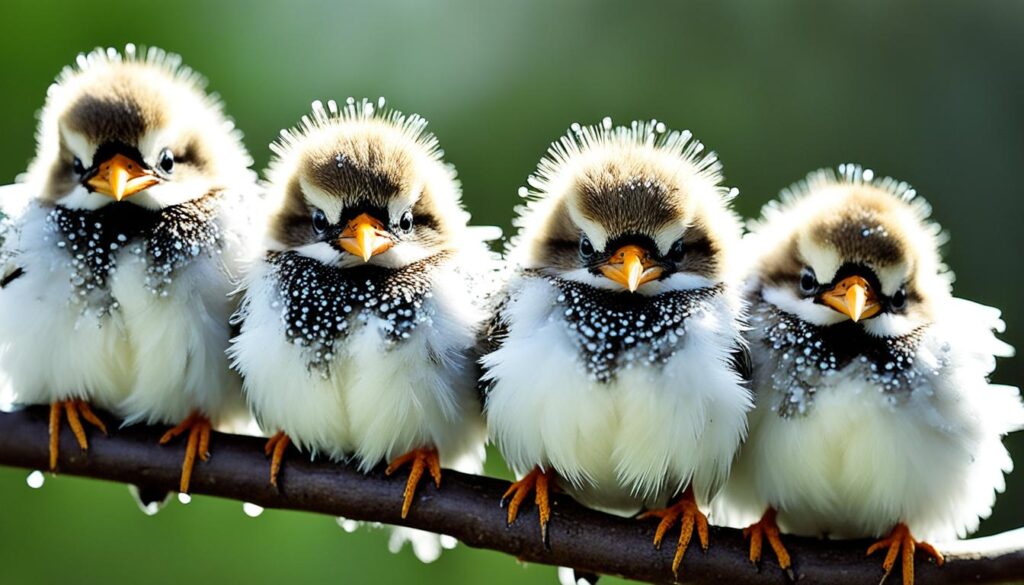
Bird Droppings: Solid or Liquid?
Bird droppings can be solid or liquid, depending on many factors. These include what the bird eats, how much water it drinks, and its health. Some birds make solid droppings that are easy to clean. Others have droppings that are more liquid or semi-liquid.
Consistency Variations
Normal bird droppings are made of feces, urates, and urine. These parts affect how the droppings feel. If a bird doesn’t eat solid food for a day, its droppings can become dark and sticky.
Diarrhea in birds means their droppings are watery or they might not have solid feces at all. Eating fruits and vegetables can also change the droppings. Different colors of urates might show liver disease or infection.
It’s key to watch for changes in droppings volume, color, consistency, or how often they come. These changes could mean health problems. Always tell a bird vet if you notice anything unusual.
Different birds have different droppings because of their diets. For example, birds that eat a lot of fish, like great blue herons or gulls, have white droppings. This is because their waste is mostly ammonium urate, struvite, and other substances.
“Birds don’t pee, they excrete solid and liquid waste in one dropping.”
Watching how often and what bird droppings look like can tell us a lot about their health. By knowing about consistency of bird poop, we can spot problems early. This helps us take care of our birds better.
Dealing with Stealth Poops
Bird owners might sometimes find “stealth poops” – unexpected droppings on surfaces. These surprise messes can be hard to clean, especially if they dry out. The best way to handle dealing with stealth bird poops is to check the bird’s area often and clean up droppings right away. This stops them from drying and getting harder to clean.
Being watchful and cleaning often keeps the bird’s space clean. This stops dried, hard droppings from building up. Here are some tips for dealing with stealth poops:
- Check perches, toys, and other areas often for droppings.
- Clean surfaces right after seeing a poop to stop it from drying.
- Use warm water and mild detergent to clean, then disinfect to kill bacteria.
- Avoid harsh chemicals or rough cleaners, as they can hurt your bird or damage things.
Being alert and acting fast when you see stealth bird poops keeps your bird’s area clean and safe. A proactive approach is important for a healthy, happy home for you and your bird.
“Vigilance and prompt action are the keys to managing stealth poops. Neglecting even a single dropping can lead to a bigger mess down the line.”
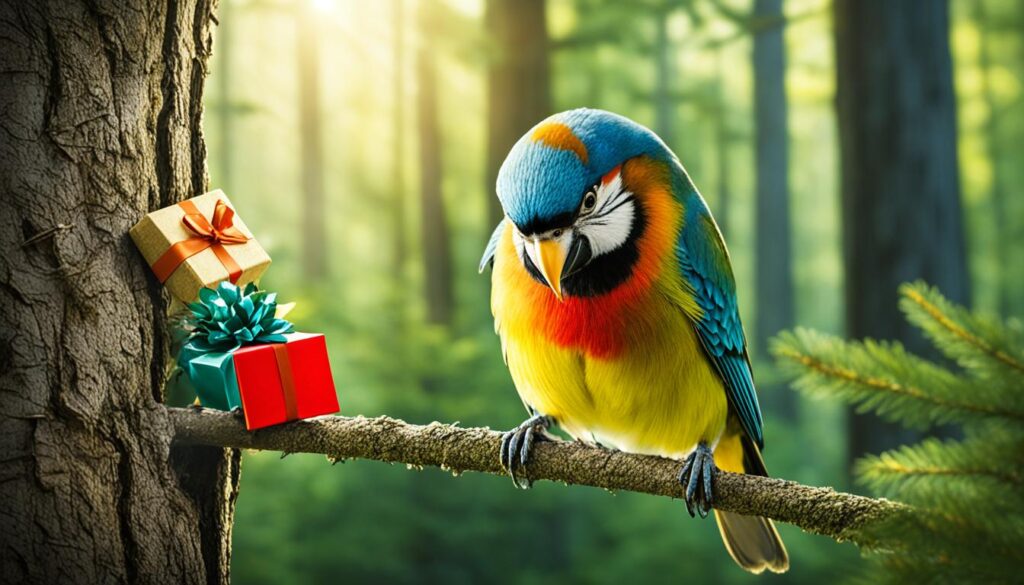
Protecting Surfaces from Bird Droppings
Keeping surfaces clean from bird droppings is key for bird owners and those living with birds. Regular cleaning and using protective coverings keep the environment clean and healthy for birds and people.
Preventive Measures
Putting newspaper, cloth, or other coverings on surfaces where birds sit can reduce droppings. This easy step helps avoid the mess and health risks from bird droppings.
Along with barriers, cleaning with the right products is vital. Cryptococcosis and histoplasmosis infections can happen by breathing in spores from dried bird droppings. So, cleaning up quickly and well is important.
- Use NIOSH-approved respirators with HEPA filters to protect from spore inhalation during cleanup.
- Wear disposable coveralls, gloves, boots, and hats to minimize the risk of contamination.
- Choose nonmetallic tools, like plastic spatulas and brushes with natural or nylon bristles, for cleaning delicate surfaces.
- Put the droppings and any dirt in thick plastic bags for safe disposal.
By taking these preventive measures for bird poop, you can keep surfaces safe from bird droppings. This helps keep your space clean, safe, and nice for you and your birds.
Cleaning Bird Poop Stains
Dealing with bird poop stains can be tough, but you can remove them with the right steps. It’s key to act fast, as dried droppings are harder to clean.
To clean, you might use water, mild detergents, and some hard work, based on the surface and stain type. Some bird droppings are very acidic. This can change fabric colors or damage car paint.
- First, scrape off any solid poop with a knife or a dull scraper.
- Then, blot the area with a clean cloth or paper towels to soak up the liquid.
- Next, rinse the area with cold water to stop the droppings from sticking more.
- For dye stains, an oxygen-based bleach solution can help remove the color.
- If the stain won’t go away, try a mild detergent or baking soda to break it down.
- For tough stains, white vinegar or hydrogen peroxide might work well.
If you can’t get rid of the stains yourself, consider a professional cleaning service. They have the skills and products to remove even the toughest stains.
Act fast when you see bird poop stains, as they get harder to clean over time. With the right cleaning methods and some effort, you can clean your surfaces. This keeps them looking great, even with bird visitors.
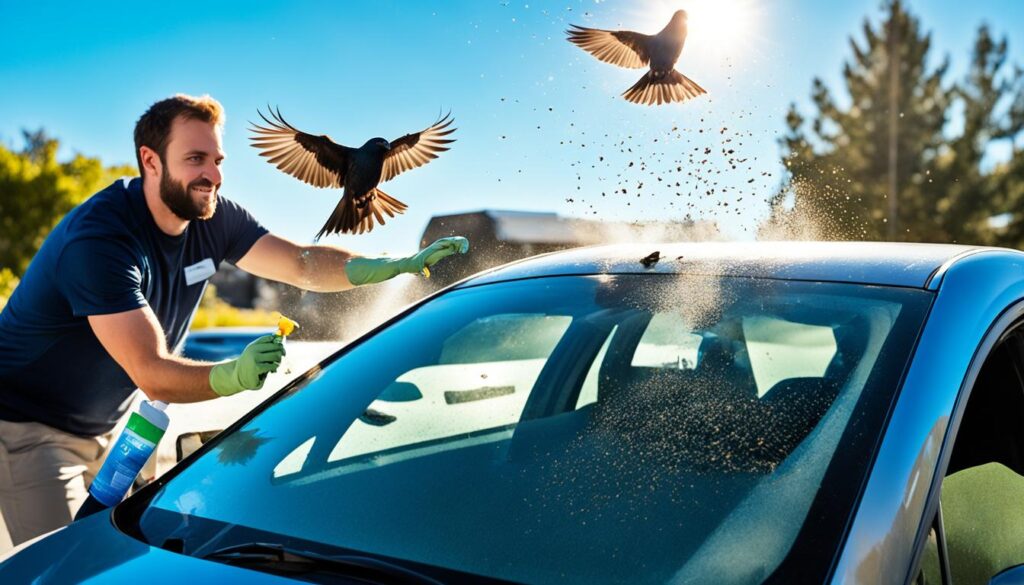
“Proper cleanup of bird poop is essential to make bird deterrent items more effective.”
Avian Bodily Waste Output Patterns
Knowing how often a bird poops can tell us a lot about its health. If a bird poops more or less than usual, it might be sick. It’s important to know what’s normal for a bird to poop so we can keep them healthy and happy.
Cockatiels poop about 18 to 26 times a day, every 20 minutes. If their droppings look different, it could mean they’re not well. This could be due to liver disease, pancreatic problems, or other health issues. What they eat can also change their poop, making it colorful or watery.
It’s important to watch how a cockatiel’s poop looks, smells, and feels. Healthy poop is brown or green, with white urates and clear urine. If their poop changes, look for other signs like being tired, not eating, breathing differently, or sunken eyes. These could mean they’re sick.
- Vets check birds with weird poop with blood tests, X-rays, and poop exams.
- Feeding a mix of fruits, veggies, pellets, seeds, and a few treats keeps birds healthy.
- Keeping their home clean, watching for changes, and seeing a vet quickly is key for their health.
“Monitoring a bird’s droppings is essential to detect early signs of health problems.”
Understanding avian bodily waste output patterns helps us spot health issues early. By watching a bird’s bird poop schedule, we can help keep them happy and healthy.
Feathered Friends’ Potty Frequency Myths
Many people think that birds poop all the time or that big birds poop less than small ones. But, the truth is more complex.
A bird’s pooping habits depend on its species, size, metabolism, diet, and unique traits. Young birds that eat formula might need to go every 20 minutes. Older birds can go anywhere from 30 minutes to 8 hours between bathroom breaks. Training a parrot can take just 72 hours, and they can even learn to go on command.
Some think that training a bird to go potty can harm it. But, this isn’t true. Using positive reinforcement helps teach birds to go potty. Birds like macaws, parakeets, and cockatiels can spread a disease called “parrot fever” to people. This happens through dried feces, mouth-to-beak contact, or touching infected bird parts.
“The incubation period for avian chlamydiosis in birds ranges from three days to several weeks, depending on the bird species and other factors.”
Learning about bird bathroom habits helps bird owners care for their pets better. It clears up many myths.

- Young birds consuming formula may need to potty every 20 minutes.
- Older birds can vary in potty frequency from 30 minutes to 8 hours.
- It may take as little as 72 hours to potty train a parrot.
- Parrots can be trained to potty on command under most circumstances.
- For some birds, they may attempt to potty every time they see their owner after training.
- Bowel control training in parrots may take longer and may not be possible until the parrot is at least a year old.
- Training should focus on positive reinforcement rather than punishment to encourage the desired behavior.
- Potty training a bird does not lead to the bird holding in its waste until it harms itself.
Birds’ Pooping Habits in Captivity vs Wild
Birds in captivity and the wild have different pooping habits. Diet, activity levels, and where they live affect their bathroom habits. Captive birds might poop more often or at odd times than wild ones because their lives are not as free.
In the wild, birds move around a lot and find their own food. This leads to a regular pooping schedule. Studies have shown that in the wild, birds often defecate immediately after being fed by their parents, with almost all fecal sacs discharged right after feeding. This keeps their nests clean and keeps predators away.
Captive birds don’t have the same active life or eating habits as wild ones. Some research suggests that captive birds may defecate more frequently or at irregular intervals, as their access to food, water, and space can be more controlled and limited.
Knowing how bird poop habits differ in captivity and the wild is key for bird owners. It helps keep birds healthy and clean. Adjusting how you care for them is important.
“Proper care and management of captive birds is essential to ensure their health and well-being, which includes understanding and addressing any differences in their bathroom habits compared to their wild counterparts.”
Conclusion
Bird poop is a topic that’s both interesting and complex. It depends on the bird’s size, metabolism, and diet. Smaller birds poop more often, while bigger ones poop less but in larger amounts.
Knowing about bird poop helps bird owners take better care of them. It keeps their living spaces clean and helps spot health issues early.
Looking into bird defecation patterns shows us how unique birds are. We learn about how often they poop and what their poop looks like when healthy. This info helps us understand birds better.
Whether you have a pet bird or just like watching them, knowing about their poop is useful. It helps us connect with these amazing creatures and appreciate their diversity.
FAQ
How often do birds poop?
Birds poop based on their size, metabolism, diet, and water intake. Smaller birds like finches poop up to 40-50 times a day. Larger birds, like macaws, poop 15-20 times a day.
What is the frequency of bird defecation?
Bird poop frequency varies by species. Smaller birds poop more, up to 40-50 times a day. Larger birds poop less, like 15-20 times a day. This depends on their size, metabolism, and diet.
How do parrots’ pooping habits differ from other bird species?
Parrots poop differently than other birds. Medium-sized parrots poop every 10-20 minutes. Larger parrots poop every 30 minutes to an hour. Some parrots might even wait to poop, leading to “projectile pooping.”
How do the pooping habits of baby birds differ from adult birds?
Baby birds poop more often than adults. Hatchlings poop a lot, with parents cleaning up after them. As they grow, their pooping habits change to match adult birds.
How can the consistency of bird droppings vary?
Bird droppings can be solid or liquid. Their poop’s consistency depends on their diet, water intake, and health. Some birds have solid droppings, while others have liquid or semi-liquid waste.
What are “stealth poops” and how can they be managed?
“Stealth poops” are droppings that appear suddenly. They’re hard to clean if not cleaned right away. To manage them, check the bird’s area often and clean up droppings quickly.
How can surfaces be protected from bird droppings?
Protecting surfaces from bird droppings is key. Use newspaper, cloth, or covers where birds perch. Clean regularly with the right products to keep the area clean and healthy.
What are some common myths and misconceptions about the frequency of bird pooping?
Many myths exist about bird pooping. For example, not all birds poop constantly, and size doesn’t always mean less pooping. Pooping habits vary by species, size, metabolism, diet, and health.
How do the pooping habits of birds in captivity differ from their counterparts in the wild?
Captive birds poop differently than wild ones. Diet, activity, and environment affect their bathroom habits. Captive birds may poop more or less than wild birds due to their different daily routines and resources.


покупка аккаунтов платформа для покупки аккаунтов
купить аккаунт с прокачкой купить аккаунт
маркетплейс аккаунтов платформа для покупки аккаунтов
перепродажа аккаунтов биржа аккаунтов
биржа аккаунтов биржа аккаунтов
площадка для продажи аккаунтов продажа аккаунтов
перепродажа аккаунтов купить аккаунт с прокачкой
Account Trading Platform Accounts market
Find Accounts for Sale Guaranteed Accounts
Account Purchase Guaranteed Accounts
Marketplace for Ready-Made Accounts Purchase Ready-Made Accounts
Account Exchange Service Accounts for Sale
Accounts market Marketplace for Ready-Made Accounts
Account Store Verified Accounts for Sale
Secure Account Purchasing Platform Online Account Store
Account Exchange Service Website for Buying Accounts
Sell Account Database of Accounts for Sale
account selling platform account selling platform
account selling platform account store
account trading account trading service
account marketplace database of accounts for sale
purchase ready-made accounts guaranteed accounts
accounts marketplace buy accounts
database of accounts for sale buy and sell accounts
account market account selling service
purchase ready-made accounts social media account marketplace
account purchase account buying service
purchase ready-made accounts profitable account sales
account market account exchange service
account trading platform account trading platform
sell accounts sell account
verified accounts for sale buy account
account marketplace account market
account exchange service account selling platform
social media account marketplace profitable account sales
account market https://best-social-accounts.org
account marketplace account exchange
account trading account acquisition
account market sell pre-made account
account trading platform account exchange
account trading buy pre-made account
account trading service account selling service
purchase ready-made accounts account sale
sell accounts secure account sales
marketplace for ready-made accounts secure account purchasing platform
buy accounts https://accounts-offer.org
account sale buy accounts
account trading https://buy-best-accounts.org
website for buying accounts accounts market
sell accounts https://accounts-marketplace.live
account store https://social-accounts-marketplace.xyz
accounts for sale https://buy-accounts.space
account selling platform https://buy-accounts-shop.pro
purchase ready-made accounts https://accounts-marketplace.art
account purchase https://social-accounts-marketplace.live
secure account purchasing platform account marketplace
buy account https://accounts-marketplace.online
accounts for sale https://accounts-marketplace-best.pro
площадка для продажи аккаунтов https://akkaunty-na-prodazhu.pro
маркетплейс аккаунтов https://rynok-akkauntov.top
продать аккаунт купить аккаунт
площадка для продажи аккаунтов магазины аккаунтов
маркетплейс аккаунтов соцсетей https://akkaunty-market.live
продажа аккаунтов https://kupit-akkaunty-market.xyz
маркетплейс аккаунтов соцсетей https://akkaunty-optom.live/
маркетплейс аккаунтов https://online-akkaunty-magazin.xyz/
продать аккаунт https://akkaunty-dlya-prodazhi.pro
маркетплейс аккаунтов https://kupit-akkaunt.online
facebook ad account buy https://buy-adsaccounts.work/
buy fb ads account https://buy-ad-accounts.click
buy facebook ad account buy-ad-account.top
buying facebook account https://buy-ads-account.click
fb account for sale https://ad-account-buy.top/
facebook ads account for sale https://buy-ads-account.work
buy facebook ad accounts buy facebook ad accounts
facebook ad account for sale https://buy-ad-account.click
cheap facebook advertising account https://ad-accounts-for-sale.work
buy google ad account https://buy-ads-account.top/
buy account google ads buy google adwords accounts
buying fb accounts https://buy-accounts.click
google ads agency accounts ads-account-for-sale.top
buy google ad account buy google ads verified account
google ads account buy https://buy-ads-invoice-account.top
buy google ads google ads accounts for sale
buy account google ads https://buy-ads-agency-account.top
buy old google ads account https://sell-ads-account.click
facebook verified business manager for sale https://buy-business-manager.org/
google ads account seller https://buy-verified-ads-account.work/